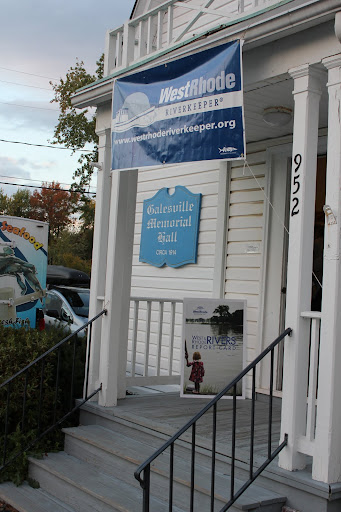|
Dec 05
2012
|
Guest Column: Preserving Family Lands in Anne Arundel CountyPosted by Chris in Untagged |
by Rick Leader, Executive Director of Scenic Rivers Land Trust
Land preservation offers families an opportunity to protect the lands they cherish. Few people want to see their properties further developed, but financial challenges may force their hand. Some have a general inclination toward land preservation, but they want a strong financial incentive to give up their development rights. The preservation of forests and other open spaces is critical to the health of our rivers and our quality of life in Anne Arundel County.
Scenic Rivers Land Trust (SRLT) has been preserving land in Anne Arundel County since 1988. SRLT works closely with willing landowners who want to voluntarily restrict further development of their properties through land preservation agreements known as easements.
An easement is a binding agreement that forever limits the development of a property according to very specific guidelines. It can remove all development rights, or allow room for limited expansion of an existing house or possibly the addition of a new structure. An easement is permanent; it forever conveys with the property deed.
Along with the personal goal of protecting in perpetuity a property they value, landowners can realize several financial incentives for placing an easement on their property. Easements can significantly reduce estate taxes, making it easier to keep land in the family. Anne Arundel County waives a portion of annual property taxes on eased properties. Easements that meet specific IRS requirements may result in large income tax deductions. In rare cases, funding becomes available to purchase easements.
SRLT holds and manages easements on 52 properties in Anne Arundel County, protecting over 2,500 acres. The organization has just released a draft expansion and fundraising plan that would double the number of acres protected by 2015. To learn more, contact SRLT Executive Director Rick Leader at Rick@SRLT.org or 410-310-6541 and visit the SRLT web site at www.srlt.org.






 After years of work we are pleased to report that a large treatment wetland will be installed at YMCA Camp Letts. Work began on November 26th and will last about one month. This project will be located between the camp’s horse paddock and Selman Creek on the Rhode River. The purpose of this project is to treat the sediment and horse waste that runs off the fields during rain events before it reaches the river. We are very excited about his project and would like to thank the Soil Conservation District, Camp Letts, and Kirk Mantay for all their hard work to get this project started and as well as the Chesapeake Bay Trust for their hard work and for funding the project.
After years of work we are pleased to report that a large treatment wetland will be installed at YMCA Camp Letts. Work began on November 26th and will last about one month. This project will be located between the camp’s horse paddock and Selman Creek on the Rhode River. The purpose of this project is to treat the sediment and horse waste that runs off the fields during rain events before it reaches the river. We are very excited about his project and would like to thank the Soil Conservation District, Camp Letts, and Kirk Mantay for all their hard work to get this project started and as well as the Chesapeake Bay Trust for their hard work and for funding the project.
 We are having a great first year of the Marylanders Grow Oysters Program in the Rhode River.
We are having a great first year of the Marylanders Grow Oysters Program in the Rhode River.
 Nutrients leaching through the soil from septic systems contribute about six percent of excess nutrients going into our waterways. Failing conventional septic systems are the worst. Even well maintained conventional systems are big polluters. While new enhanced technology systems are much better, their effluent still contains three or four times as much nutrients as effluent from a modern sewage treatment plant. It should not come as a surprise then that “smart growth” principles encourage higher density development near sewers and discourage McMansion development of farmer fields served by septics.
Nutrients leaching through the soil from septic systems contribute about six percent of excess nutrients going into our waterways. Failing conventional septic systems are the worst. Even well maintained conventional systems are big polluters. While new enhanced technology systems are much better, their effluent still contains three or four times as much nutrients as effluent from a modern sewage treatment plant. It should not come as a surprise then that “smart growth” principles encourage higher density development near sewers and discourage McMansion development of farmer fields served by septics.
 My name is William Saffell and I am excited to announce that I am the newest addition to the West/Rhode Riverkeeper team. My involvement here is made possible through the Chesapeake Conservation Corps program, which is funded by the Chesapeake Bay Trust. Through this program, I am able to assist the West/Rhode Riverkeeper for a full year. While here, I will have an active role in water monitoring, creating the annual report card, assisting in ongoing restoration projects, and identifying/implementing new projects that will promote a healthier West/Rhode River.
My name is William Saffell and I am excited to announce that I am the newest addition to the West/Rhode Riverkeeper team. My involvement here is made possible through the Chesapeake Conservation Corps program, which is funded by the Chesapeake Bay Trust. Through this program, I am able to assist the West/Rhode Riverkeeper for a full year. While here, I will have an active role in water monitoring, creating the annual report card, assisting in ongoing restoration projects, and identifying/implementing new projects that will promote a healthier West/Rhode River.

